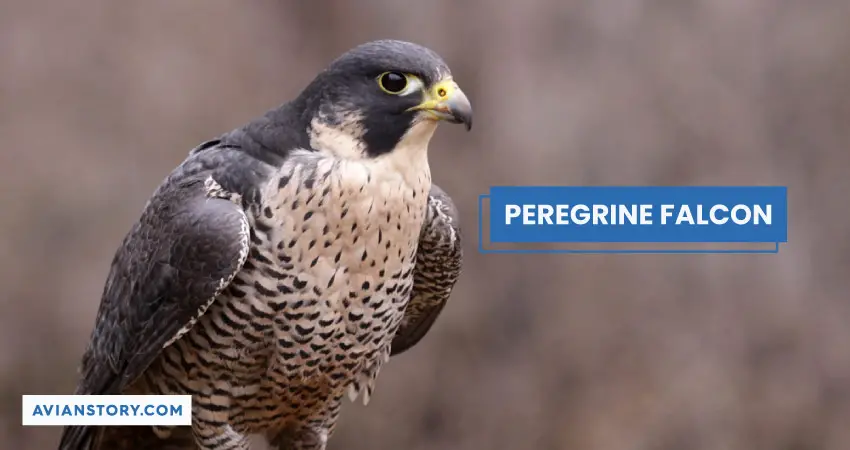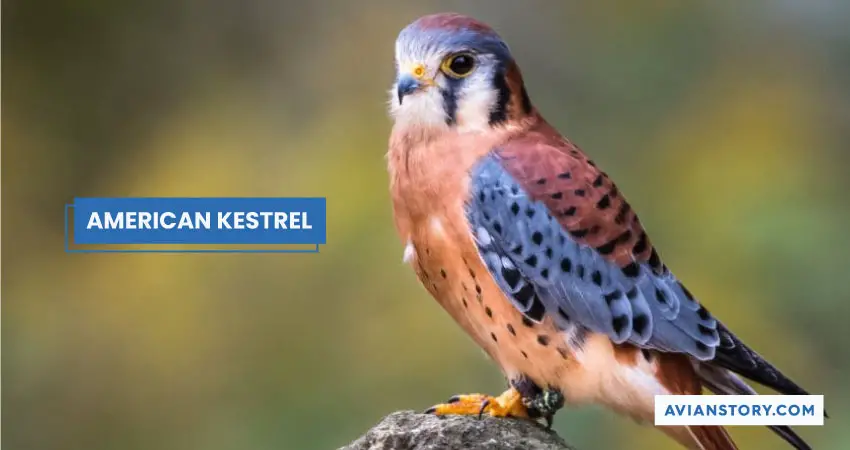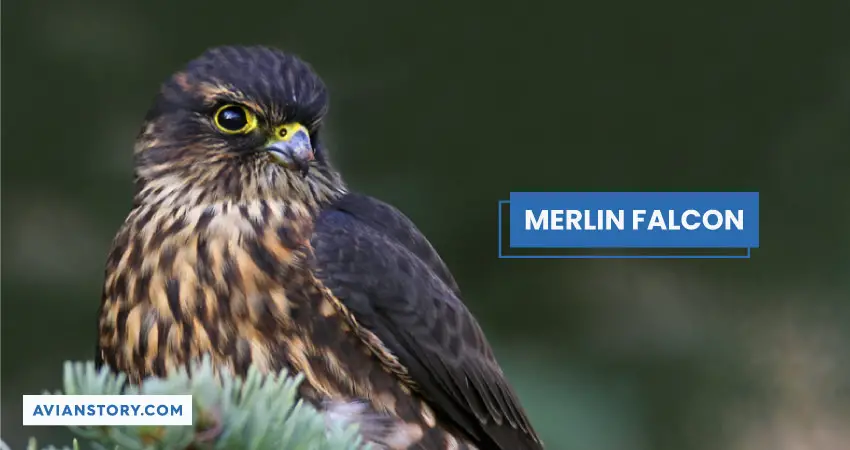Here’s All You Need to Know About Falcons in Oregon!
You can expect to find beavers in the Beaver state, but what about falcons? These gorgeous yet highly stealth raptors can be found in your hometown – and not just one species!
So, the answer is yes – there are definitely falcons in Oregon, and we have listed out all the necessary information you need to know about them. Without further ado, let’s get right high-rise it.
Are There Falcons in Oregon?
A common habitat for falcons is mountainous areas or places with high-rise buildings, as they like to build their nests far away from humans. Oregon is a state rich in mountain ranges, which means you can find many different types of falcon in this area.
Here are details about the different kinds of falcons you will find in Oregon:
Types of Falcons in Oregon
There are commonly five species of falcons found in the Beaver state, listed as follows:
- Peregrine Falcon (Falco peregrinus)
- American Kestrel (Falco sparverius)
- Merlin (Falco columbarius)
- Prairie Falcon (Falco mexicanus)
- Gyrfalcon (Falco rusticolus)
Falcon Species Profile and Details
Now that you know the different variations of this raptor, here are some further details for each species.
1. Peregrine Falcon (Falco peregrinus)

Quick Species Profile
- Length: 14.2 – 19.3 inches
- Weight: 0.73 – 2.20 lbs. (males) and 1.5 – 3.3 lbs. (females)
- Wingspan: 29 – 47 inches
- Commonly found in: North America (all over Oregon), Europe, Mexico
Physical Appearance
Peregrine falcons can be distinguished by their blue-grey back and head with horizontal plumage on the breast. Female birds are nearly 30% larger in size compared to males. Baby peregrine falcons appear brownish in color rather than grey.
The underside of the body is striped, usually in shades of white, dark brown, and/or black. And the top part of the beak (known as the cere) is yellow like their feet, while the tip of the beak and talons are black. A sharp curve ends at the tip of the beak, allowing the shape to kill the prey from the spinal cord directly.
Special Characteristics
Ever wondered what the fastest bird in the world is? That’s right – it is the peregrine falcon! These raptors are actually faster than cheetahs, with a maximum speed of 200 miles per hour.
Peregrine falcons are carnivorous and eat other small birds, such as pigeons. Before grabbing their prey, this falcon flies around straight for nearly half a mile and then makes a sudden, sharp stoop to catch the prey with their claws.
Fun Fact
The scientific name of the peregrine falcon translates to “wandering falcon.” This means that these birds like to travel and will fly great distances even if their intention is not food or mating.
2. American Kestrel (Falco sparverius)

Quick Species Profile
- Length: 8.7 – 12.2 inches
- Weight: 0.17 – 0.32 lbs. (males) and 0.2 – 0.36 lbs. (females)
- Wingspan: 20 – 24 inches
- Commonly found in: North America (all over Oregon), Central America, South America, deserts, moorlands, meadows, grasslands, and open areas.
Physical Appearance
This type of falcon is easy to distinguish because of its small size. Female kestrels have a rusty brown shade on their head, back, and wings, while males have contrasting blue-grey head.
American kestrels have a light body that helps them to maneuver their flight and with comparatively strong and heavy claws and beaks.
The most distinguishable part of this falcon is the dark marking they have on each side of its face. It is possible that these exist to confuse larger predators, for they appear as “false eyes”.
Special Characteristics
American kestrels are very easy to tame and train. Hence, these birds are most commonly used in falconry. A kestrel’s diet consists of other small birds and insects.
Fun Fact
American kestrels have the disadvantage of falling prey to large raptors because of how small they are. They basically weigh the same as a small bag of pennies, and thus have to work harder to hide from predators.
3. Merlin (Falco columbarius)

Quick Species Profile
- Length: 9 – 13 inches
- Weight: 0.35 – 0.53 lbs.
- Wingspan: 21 – 23 inches
- Commonly found in: North America (all over Oregon) and Eurasia.
Physical Appearance
Merlin falcons are another species of falcon that are very small in size. However, their size does not compromise their ferocity.
A merlin falcon has dark grey feathers covering the head, back, and wings, with grey and white, barred feathers in the underwing area. They can also have brown feathers with the same pattern as described.
Special Characteristics
These small raptors have a sharp and shrill cry which is easily distinguishable from other birds. Along with small birds, their diet consists of rodents, dragonflies, reptiles, and bats. Merlins are very strong fliers, and you can most likely catch them flying in Oregon during winter.
Fun Fact
Merlin falcons might look fluffy and cute, but they are extremely aggressive and territorial. When in contact with humans, they can attack with their sharp beaks and talons.
4. Prairie Falcon (Falco mexicanus)
Quick Species Profile
- Length: 15 – 18 inches
- Weight: 1.1 – 1.4 lbs. (males) and 1.7 – 2.1 lbs. (females)
- Wingspan: 3.5 feet
- Commonly found in: North America (mostly in the west), Southern Canada, Northern Mexico
Physical Appearance
Prairie falcons have a beautiful distribution of feathers colored grayish brown, with a white breast and underside covered with brown dots. A striking dark outline covers the edges of the inside of the wings. They have a massive wingspan which is hard to miss if they are flying in the air.
Special Characteristics
These raptors are extremely protective of their nests and will kill any creature in the way that they think serves as a threat. Although these birds are big in size, it can sometimes be hard to spot them as they are super-fast and constantly moving.
It is rare to find prairie falcons just perching atop a tree or building.
Diets for these birds typically consist of small mammals such as gophers, squirrels, prairie dogs, and rabbits.
Fun Fact
When a prairie falcon spots its prey, it will not stop until hunting it down. No matter how long or how far they have to fly, they will make sure to catch their kill.
5. Gyrfalcon (Falco rusticolus)
Quick Species Profile –
- Length: 19 – 25.5 inches
- Weight: 1 – 2 lbs. (males) and 2 – 4 lbs. (females)
- Wingspan: 4 – 5.3 feet
- Commonly found in: Arctic regions in North America, Europe, and Asia.
Physical Appearance
Gyrfalcons are the biggest species of falcon in the, with a massive wingspan that is the size of a whole person. Identifying a gyrfalcon can sometimes be tricky as they don’t have a specific color of feathers.
They can be all white, silver, grey, and also brown, and grey-black with small markings all over their wings and underparts.
Special Characteristics
Gyrfalcons usually breed in colder areas such as Alaska and other countries in the north. They will typically eat any game they are able to hunt but usually go for medium-sized mammals and birds.
These raptors are very loyal animals and are known to mate for life. They are basically “married” and do not pursue any other mate unless one of them dies.
Fun Fact
Gyrfalcons are very clever hunters and intelligent birds in general. They were considered to be royal birds in medieval times.
Where Do Falcons Migrate During Winter?
Just like all flight birds and other raptors, falcons in Oregon will migrate to other areas as the seasons change. Here’s a table of the range maps according to species of where falcons migrate to in winter and year-round.
| Species Name | Winter Migration to | Year-round availability |
| Peregrine Falcon | West and South-east states | States near and including Oregon, Nevada, Arizona |
| American Kestrel | States near the Gulf of Mexico | All over the country |
| Merlin | West and Central America | Northern states (Wyoming, Montana) and Canada |
| Prairie Falcon | Central America | Western states (Oregon, Utah, California, Nevada, Arizona) |
| Gyrfalcon | Northern states and Canada | Alaska and northern hemisphere countries |
Final Words
Even if you’re not interested in birds, the different types of falcons in Oregon will change that feeling for sure. If you reside in Oregon, be sure to check the season and get out that high-res camera of yours because there’s some falcon-watching to do!
Falcons Found in Some States:
Resources:
- https://en.wikipedia.org/wiki/Peregrine_falcon
- https://www.audubon.org/field-guide/bird/peregrine-falcon
- https://en.wikipedia.org/wiki/American_kestrel
- https://en.wikipedia.org/wiki/Prairie_falcon
- https://en.wikipedia.org/wiki/Gyrfalcon
